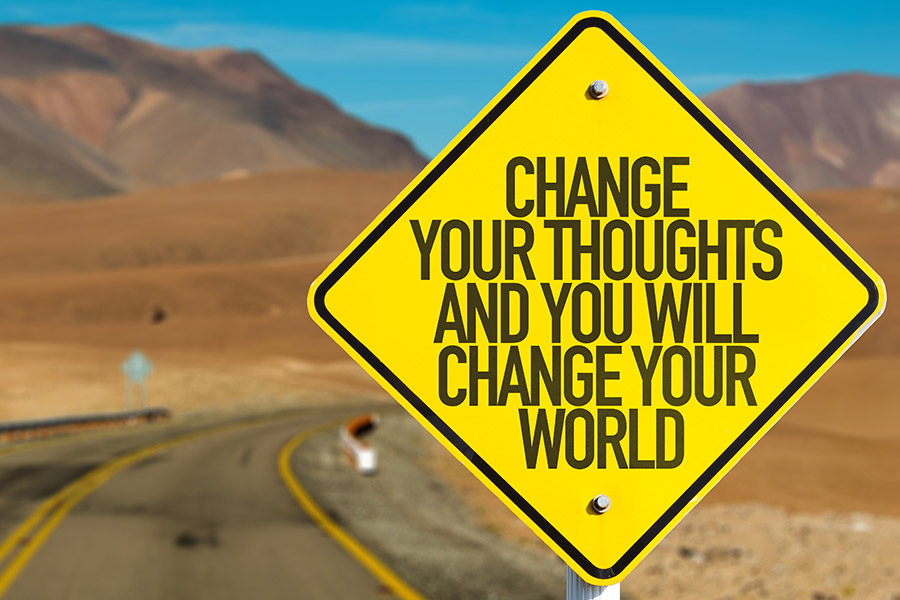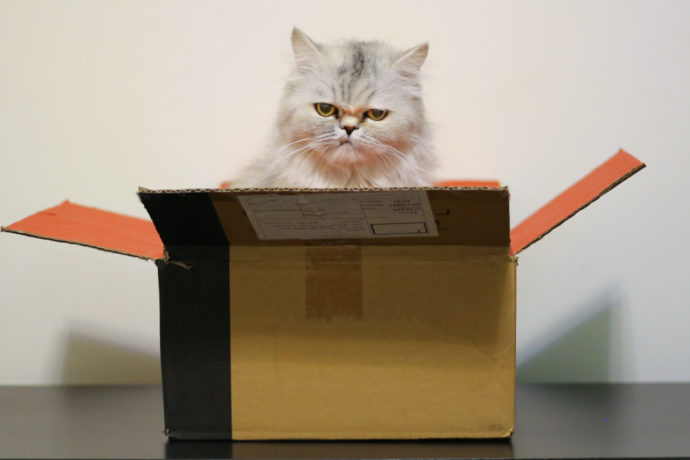Communication is the key to all the relationships we have, which means it is also the key reason that some of our relationships go “wrong”. Going “wrong” can have many different looks too, ranging from explosive to brooding silence, all the way to drifting apart and losing contact. However “wrong” looks for you, this relationship breakdown causes stress and our assumptions that we make of people can be a core factor.
Ch-Ch-Ch-Ch-Changes

If you could change one thing about yourself, what would it be?
Most of us have an answer for this question, and for many it is difficult to narrow it down to a single change. Sometimes it is a physical feature, “I want a bigger bum.” or, “I want to lose my gut.” Other times it could be a behaviour, “I want to drink less.” or, “I want to go to the gym more often.” Every now and then it could be a change in attitude, “I want to be more tolerant of dumbasses.”
The reality is that we all have something we want to change about ourselves and the lives we are leading, and the behaviour associated with this. Knowing what we want to change is not an issue. Neither is knowing what behaviours we need to start or stop to make the change happen. Telling someone that they need to knock off the chips and get into the gym every now and then is not going to be a revelation. In fact, this is often infuriating and patronising, please only offer your advice when you are asked for it. So, the difficulty is not in knowing what you want to change, or the changes you need to make to reach your goals, the difficulty is in knowing how to make changes you can stick with.
Lifestyle changes are hard to make. This is a massive understatement, sometimes change seems impossible. So why is it such a struggle to make the changes we need to make to allow us to live a healthy, functional lifestyle? Some give the answer as fear of failure, others say fear of success. Some simplify things into the idea that we return to what we know best when times get tough, which is all the time. It could be a combination of these things that return you to your unwanted behavioural habits. I would suggest that we also hold onto our core belief of who we are so strongly, that we work against our knowledge of healthy behaviour to maintain our own knowledge of who we are.
To give you an example, if a person has always held the belief that they are overweight, and will always be heavy, a part of them will understand this as being their identity, and it is scary to think that they may be losing their identity if they lose weight. When this person sticks to the diet and exercise for a couple of weeks, they may start to sabotage their efforts by allowing the food that maintains the weight to slip back into their diet. Back to the couch and the chips. At the same time, they find all the perfectly valid reasons to avoid exercise sessions. – Too much work, kids got sick, I got sick, can’t afford the gym membership, the Trainer was mean to me, I read an article that said couch and chips are good for me, etc.
Does this sound familiar? If so, what seems to be happening is, once the lifestyle changes started to work, a part of you gets scared. Fair enough too, it is scary when the person you know yourself to be is being threatened with a change. Who are you if you are not that? Our primal instinct is to maintain homeostasis. This would mean that we strive to remain as we are, even when the world around us is changing. This powerful instinct is usually an unconscious one, so not something that you will even be aware that you are doing. The good news is that we can develop an awareness of when these processes are kicking into drive, and once we are aware that we are slipping back into the unwanted behaviour, challenge the behaviour with all the evidence from our past and make the healthy changes we strive for stick. Huh?
Let me break this down a bit.
When we want to challenge behaviour, we need to challenge the thought that is associated with that behaviour. Most creatures in this world live a simple existence of stimulus-response. Something happens, and there is an expected behaviour that follows. People are different. Our behaviour is more stimulus-thought-response. The pesky thought that is associated with behaviour means that when something happens, we then apply that to our previous experiences and knowledge of how the world works and make decisions accordingly. This is followed by varied, and completely unpredictable behaviours. Simple right? Not really, these thoughts that dictate our behaviour are driven from deep down in our sub-conscious.
The behaviour determining thoughts you can access are your automatic thoughts. This is where someone can ask you, “What were you thinking?” or “What was going through your head?” and you can tell them. Underneath the automatic thoughts are underlying assumptions. These are the sub-conscious rules and attitudes we hold about the way things should or shouldn’t be in the world. Deep under this are our core beliefs, which are extremely difficult to access, and at the heart of what we know about ourselves, and our place in the world. So, our core beliefs drive our underlying assumptions, our underlying assumptions drive our automatic thoughts, and these thoughts drive the negative behaviours we are wanting to change. This little equation, however, can work back the other way too. If we challenge our negative automatic thoughts which drive negative behaviour, we are also challenging our underlying assumptions and our core beliefs. Challenge your negative automatic thoughts enough with contradicting evidence, and you can eventually change a negative core belief you hold.
By now, you may need an example…
So, let me tell you about Peanut Butter Lady. When I first started to talk with people about behaviour change, I was based in a gym. Because of this, the target behaviour most clients wanted to focus on was health and fitness based. A client I knew through the gym came to see me wanting to talk to me about issues she was having with her diet. She told me that she would get to the end of a working day, open a jar of peanut butter, and eat it with a spoon.
“Okay” I shrugged, “What’s wrong with peanut butter?” Thinking a crushed legume can’t be all that evil.
“I’m afraid I’ll get fat” answered the 48-year-old woman in front of me who looked as though she had very little genetic chance of becoming overweight in any way.
So, I approached from a different angle, “What would gaining weight mean to you?” I asked.
“It would mean I couldn’t reach my goals”
“Okay, so what are your goals?”
As she listed off her goals, all of which were well thought out and realistic. Then, I noticed her flinch, so stopped her, “Right then, something went through your mind, what did it say?”
At this moment we managed to access a negative automatic thought that perhaps gave a clue to the drivers of the peanut butter eating behaviour, “It said I can’t reach my goals.” This gave us a clue as to the negative automatic thoughts that Peanut Butter Lady was living with. Knowing that there were underlying assumptions and core beliefs we unpacked this a little further. “What makes you think you can’t reach your goals?” I asked. She answered, “I fail at everything I do.”
This last statement was clearly untrue to any observer, she was very successful in many areas of life. When challenged on this, Peanut Butter Lady broke into tears as she discovered her core beliefs, “I’m a failure.” and “I’m useless.”
What this showed us is that when this talented, successful person had a good day, her core beliefs about herself were telling her it was all wrong, so she would unconsciously eat a jar of peanut butter to prove to herself that she was still useless, and still a failure.
What was important at this point was to recognise the negative automatic thoughts Peanut Butter Lady was having that were reinforcing the negative core beliefs. Once the thoughts were recognised, we could then challenge them with evidence against the thought. For example, if she made a mistake at work and caught herself in a negative thought “I’m so useless” cycle, she was instructed to find examples from the rest of the day or week that proved that there was a lot more success in her life than failure.
It takes time and practice.
The more you repeat the positive, challenging thought process, the stronger the positive becomes, and the negative thoughts have a lot less strength. The change is gradual, so keep practicing. Peanut Butter Lady told me that she still eats peanut butter, but rarely straight from the jar, and she enjoys it as a food now, rather than a symbol of failure. Her core beliefs have changed from “I’m a failure” to “There are some things I don’t fail at”. This seems like a small change, but it is enough to change the way she views herself and treat herself with the respect she deserves.
It is hard to change habits of a lifetime. First, we need to recognise the negativity we are carrying around. Second, challenge it using all the evidence of successes you have had that contradict the negativity, no matter how small. Repeat this practice enough, and eventually your thought patterns will instinctively find the positive in situations, allowing the desired behaviour to simply be a part of who you are.
Feel free to contact me with any questions or make an appointment, text/phone 021 99 00 54 or email [email protected]



